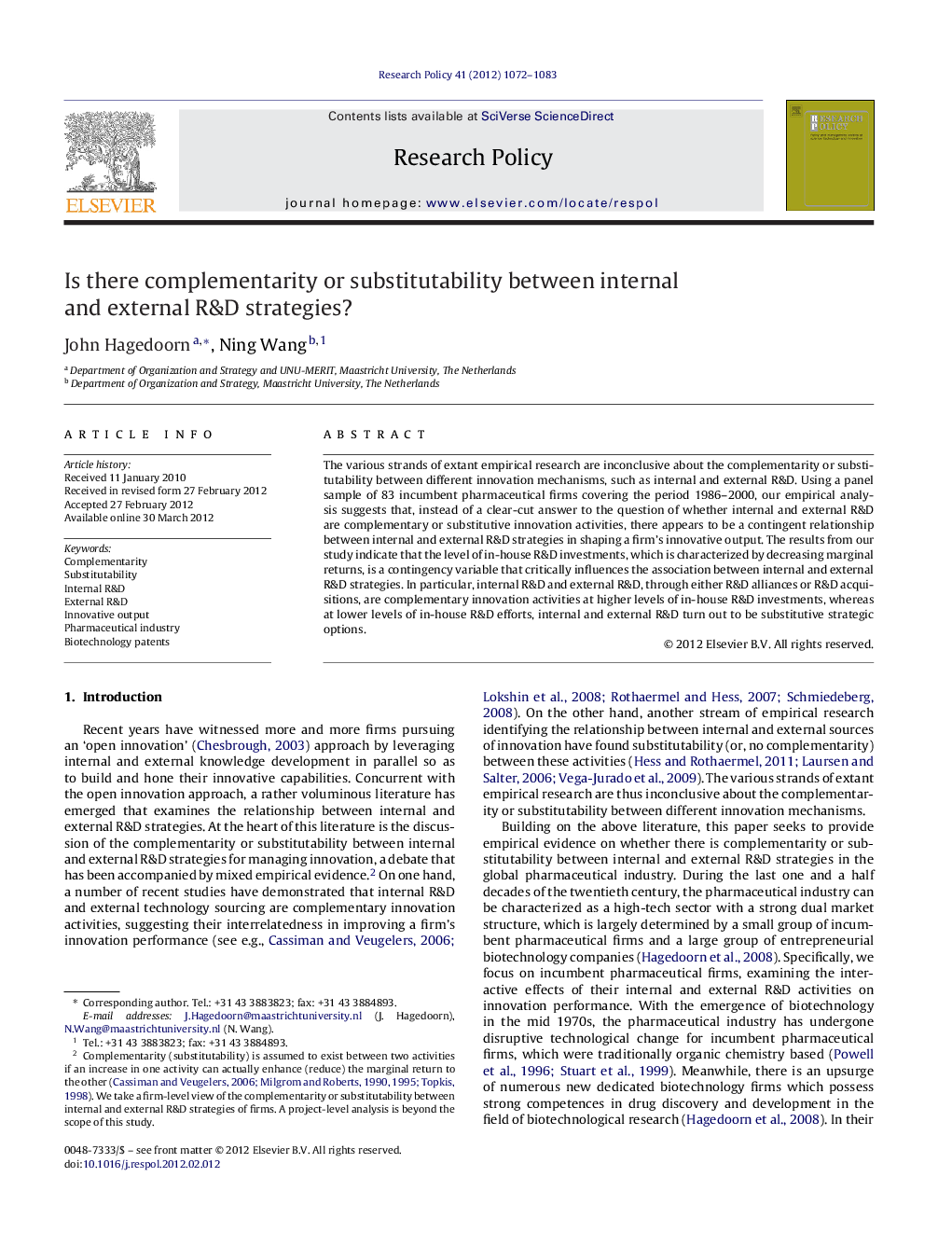| کد مقاله | کد نشریه | سال انتشار | مقاله انگلیسی | نسخه تمام متن |
|---|---|---|---|---|
| 984976 | 934395 | 2012 | 12 صفحه PDF | دانلود رایگان |

The various strands of extant empirical research are inconclusive about the complementarity or substitutability between different innovation mechanisms, such as internal and external R&D. Using a panel sample of 83 incumbent pharmaceutical firms covering the period 1986–2000, our empirical analysis suggests that, instead of a clear-cut answer to the question of whether internal and external R&D are complementary or substitutive innovation activities, there appears to be a contingent relationship between internal and external R&D strategies in shaping a firm's innovative output. The results from our study indicate that the level of in-house R&D investments, which is characterized by decreasing marginal returns, is a contingency variable that critically influences the association between internal and external R&D strategies. In particular, internal R&D and external R&D, through either R&D alliances or R&D acquisitions, are complementary innovation activities at higher levels of in-house R&D investments, whereas at lower levels of in-house R&D efforts, internal and external R&D turn out to be substitutive strategic options.
► The results from our study indicate that the level of in-house R&D investments critically influences the association between internal and external R&D strategies of firms.
► Internal R&D and external R&D, through either R&D alliances or R&D acquisitions, are complementary innovation activities at higher levels of in-house R&D investments.
► At lower levels of in-house R&D efforts, internal and external R&D turn out to be substitutive strategic options.
► Our findings are robust to alternative specifications and estimation techniques, including a dynamic perspective on firm innovative performance.
Journal: Research Policy - Volume 41, Issue 6, July 2012, Pages 1072–1083